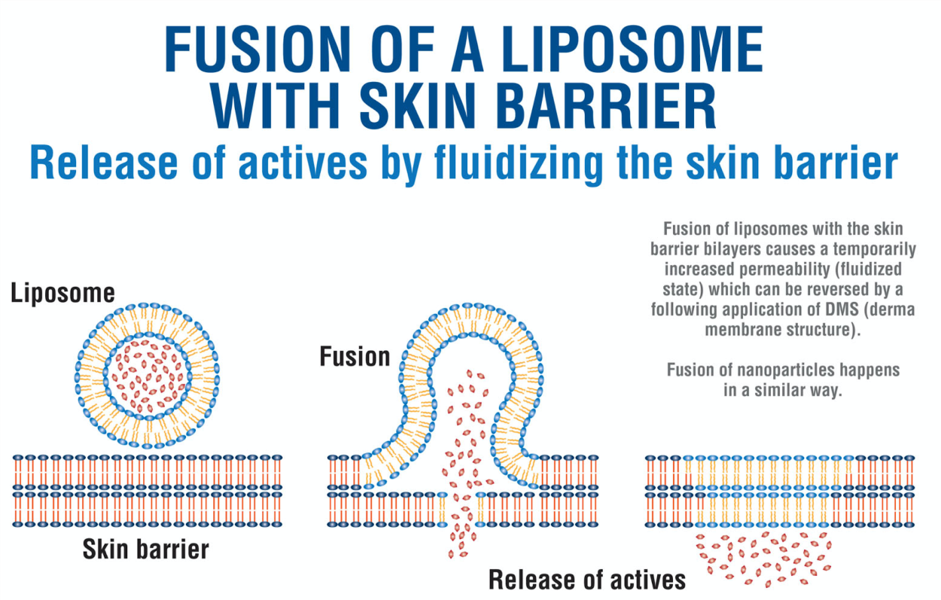Nanotechnology is the science of manipulating atoms and molecules in the nanoscale – 80,000 times smaller than the width of a human hair.
The use of nanotechnology has stretched across various streams of science, from electronics, optics, and magnetics to medicine, and has found applications in the field of cosmetics.
It is, however, nothing new. Nanoparticles have been around for billions of years, and individuals are exposed without thinking about it. Just think of some examples:
- smoke and soot from fires (campfire, chimney, and forest fires)
- dust from the Sahara Desert that travels for hundreds of kilometers
- ash from volcanic eruptions like the 2010 eruption of the Eyjafjallajökull volcano in Iceland, which caused enormous disruption to air travel across western and northern Europe
- microscopic seeds, grains, and pollens that are always in the air in some form
Some can have adverse effects on the human body. These components are non-biodegradable nanoparticles: diesel dust (lungs), coal dust (lungs), asbestos particles (lungs), anti-cancer nanoparticles (injected medical iron particles – liver), and other insoluble powder-like technical nanoparticles (lungs).
It is easy to see why nanoparticles have a bad reputation. Still, in the world of cosmetics (and other fields), nanoparticles also open a world of possibilities for the benefit of humankind.
NANOPARTICLES IN SKIN CARE
In skin care, there are two types of nanoparticles used in cosmetic formulations: non-biodegradable and biodegradable. Furthermore, there is a distinction made between solid and liquid nanoparticles. Their degradability depends on the individual components that were processed.
Solid nanoparticles, except for organic nanocrystals, mostly either non-degradable or rather persistent to degradation. The most important variants are:
- nanocrystals of difficultly soluble organic substances or organic substances with a high melting point, such as boswellia acids (frankincense), phytosterines, flavonoids, and their glycosides (for instance, rutin, as well as ceramides)
- lipid nanoparticles made of waxes, polyalphaolefins, and other hydrocarbons; they coalesce on the skin to form occlusive films, from which lipophilic active agents such as coenzyme Q10 are released
- polymer beads made of polyamides, polypeptides, or polysaccharides with embedded, mostly pharmaceutical, active agents
- silica-nanoparticles (silicic acid), which integrate and stabilize amorphous active agents and pigments in their pores
- inorganic substances such as titanium dioxide, zinc oxide, and carbon (carbon black) for sun protection purposes or decorative cosmetics
- elementary precious metals, such as silver and gold; gold forms red dispersions, silver has antibacterial and anti-inflammatory properties
Liquid nanoparticles based on phosphatidylcholine are readily biodegradable. Penetrating into the skin are the individual molecular components but not the entire particles. They include:
- nanoparticles with fat-soluble active agents such as vitamins, coenzyme Q10, ceramides, vegetable oils, and essential fatty acids
- liposomes with water-soluble vitamins, antioxidants, glycosides, moisturizers, and so forth
- biodegradable (liquid) nanoparticles; the nanoparticles are metabolized in the same way as other components contained in creams and lotions
With an overview of nanoparticles in place, the question remains – what does that mean for the skin professional and their clients?
Skin care professionals all want to work at delivering the best outcomes for clients. Part of that is using the highest-quality product available to clients with the best delivery system. In the end, if the skin does not absorb the components, there is no result.
Nanoparticles take skin care to the next level. Yes, it is beneficial to have the availability of titanium dioxide and zinc oxide in sun protection and decorative cosmetics without looking like a ghost. Skin care professionals all understand the benefit in that. But liquid nanoparticles have nothing short of magic potential.
NANOSOMES AND LIPOSOMES
It is in this category (of which liposomes are part of) that the basis of phosphatidylcholine actively helps to restore skin barrier protection. As if that is not enough, the encapsulation protects the active agents from oxidation, preserving the potency of the active agent, and it delivers the active agent to the deeper levels of the skin without irritation.
The difference between a nanosome and liposome is that nanosomes are a single or double layer, whereas liposomes are a double layer. Nanosomes can also be up to 20 times smaller than liposomes and differ in both composition and manufacturing processes.
A much higher-quality phospholipid ingredient than the commercial lecithin is used, nanosomes with higher percentages of phosphatidylcholine (PC), which is an essential component of cell membranes.
Lecithin, a commonly used source for liposomes, typically contains only 10% to 20% phosphatidylcholine; however, higher-grades used to create nanosomes may contain up to 40% phosphatidylcholine.
Due to the higher-quality of materials that make up nanosomes, the belief is that this equates higher cell compatibility, they possess more significant non-antigenic properties, and they are also more biodegradable than liposomes.
The creation of nanosomes is a complex, lengthy, and delicate process. It includes the use of high pressure supercritical fluids or subjecting large, multiple-layer liposomes to ultrasonic energy. The cost is more expensive than it is to produce liposomes.
Nanosomes can easily penetrate the skin by topical application due to their small size. Because active ingredients get trapped inside them, the transportation of these actives is delivered more efficiently to the desired target cells.
As if that is not enough benefit, another great benefit of using nanosomes is the bonus provided by the various phospholipid types they are made with. It means they can contain, encapsulate, and mobilize both water-soluble materials and oil-soluble materials. Nanosomes can not only deliver a wide variety of encapsulated ingredients to cells but, in the cases of higher-grades of materials, can also deliver phosphatidylcholine, to help create the cells’ own building blocks.
BENEFITS
To bring this point home, phosphatidylcholine phospholipid molecule is a universal building block for cell membranes, and the cell’s membranes are its essence: they regulate the vast majority of the activities that make up life.
What does that mean for skin professionals and their clients? Using these systems means the need for emulsifiers is unnecessary. Many clients have a low tolerance for emulsifiers and tensides, especially those suffering from problematic skin, as their skin irritates easily.
Nanoparticles penetrate the barrier layers of the horny skin, dissolving immediately due to their composition. The barrier layers temporarily fluidize during this process, and the encapsulated active ingredients are released and can penetrate through the skin barrier.
This figure demonstrates this process (illustrating a liposome in this example):

Following this fusion with the barrier layers, nanoparticles penetrate the deeper layers of the skin or are hydrolytically and enzymatically split into physiological components. These components, like phosphoric acid, glycerin, choline, and fatty acids, are the reason why the barrier function gets restored.
Ultimately, the benefit to the skin is multifaceted because the application potential is vast, depending on what gets encapsulated in the end.
Individual substances (or actives), as well as mixtures of substances and herbal extracts, are used with an emphasis on biodegradable nanodispersions that are compatible with the human skin. Skin barrier repair is always a benefit, due to the phospholipid content – that essential component of cell membranes, the building block.
Nanoparticles are useful in the prevention and treatment of hyperpigmentation and prematurely aging skin. It is beneficial in the skin care regimen of sun and radiation stressed skin. It can assist in the prevention of skin barrier disorders, cornification, and connective tissue disorders, such as neurodermatitis, perioral dermatitis, psoriasis, acne, and rosacea.
When discussing nanoparticles in skin care, like those mentioned in this article, it is clear that they are beneficial to the skin. Harmful nanoparticles, such as dust, asbestos, diesel dust, and volcanic ash, are not of concern in the discussion relative to cosmetics.
In particular, liquid nanoparticles are the skin care of the future – the future that is already here.
References
1 Barrett-Hill, Florence. “Cosmetic Chemistry.” 2nd Edition. Virtual Beauty Corporation,
2009, 33-35.
2 Lautenschläger, Hans. “So small and subtle - nanoparticles from solid to liquid.” medical
Beauty Forum no. 2 (2016): 12-16.
3 Lautenschläger, H. “Nanoparticles - sizing up skin care.” Professional Beauty (Australia)
- 4 (2011): 200-201.
4 Lautenschläger, H. “Nanoparticles in cosmetic products - good or bad?” Beauty Forum no.
5 (2009): 44-47.
5 Lautenschläger, H. “Indikationsgemäße Anwendungen von Nanodispersionen, Vortrag auf
der 19.” Jahrestagung der Gesellschaft für Dermopharmazie (GD) in Berlin am.
18.3.2015.
6 Lautenschläger, H. “Cosmeceuticals.” medical Beauty Forum no. 4 (2014): 16-18.
7 Lautenschläger, H. “Dermatologische Kosmetik - Brücke zwischen Kosmetik und
Medizin.” Kosmetische Praxis no. 5 (2005): 12-14.
8 Lautenschläger, H. “Geschichte und aktuelle Gesichtspunkte der Korneotherapie.”
Kosmetische Medizin 26, no. 2 (2005): 58-60.
9 Lautenschläger, H. “Mikrokosmos modularer dermaler Zusammensetzungen, Vortrag auf
der 18.” Jahrestagung der Gesellschaft für Dermopharmazie (GD) in Berlin am.
9.4.2014.
10 Lautenschläger, H. “Nanopartikel in Kosmetika - gut oder schlecht?” Beauty Forum no. 5
(2009): 44-47.
11 Cosmetics & Toiletries 119, no. 6 (2004): 68
12 Lautenschläger, H. “Hautaufhellende Wirkstoffe von A-Z - ein Überblick.” Kosmetik
International no. 9 (2013): 22-28.
13 Lautenschläger, H. “Huckepack - Übersicht Trägersysteme.” medical Beauty Forum no. 1
(2013): 16-18.
14 Lautenschläger, H. “Nutzen von lamellaren Präparaten in der Hautpflege, im Hautschutz
und in der dermatologischen Therapie, Vortrag auf der 17.” Jahrestagung der
Gesellschaft für Dermopharmazie (GD) in Mainz am. 23.3.2013.
15 Lautenschläger, H. “Biodegradable lamellar systems in skin care, skin protection and
dermatology.” SOFW-Journal 139, no. 8 (2013): 2-8.
16 Lautenschläger, H. “Pflege bei Neurodermitis - Die Barriere unterstützen.” Kosmetische
Praxis no. 1 (2005): 9-11.
17 Lautenschläger, H. “Lippenerkenntnisse - Bewährte und neue Pflegetipps.” medical \
Beauty Forum no. 6 (2014): 18-20.
18 Lautenschläger, H. “Hautpflege bei Schuppenflechte - ganz individuell.” Beauty Forum
- 10 (2009): 48-51.
19 Lautenschläger, H. “Akne: Möglichkeiten der kosmetischen Prävention.” Beauty Forum
- 2 (2015): 88-91.
20 Lautenschläger, H. “Korneotherapeutische Hautpflege bei Rosacea.” Ästhetische
Dermatologie (mdm) no. 3 (2010): 16-20.
21 Lautenschläger, H. “Haut ohne Makel - Wirkstoffe und Wirkstoffsysteme.” medical
Beauty Forum no. 5 (2014): 32-35.
22 “Nanotechnology in Cosmetics and Skin Care: Opportunities and Challenges.” Bayrouti
Laboratories. http://www.bayroutilab.com/nanotechnology/.
23 Wikipedia. 2019. “2010 eruptions of Eyjafjallajökull.” Last modified November 22, 2019.
https://en.wikipedia.org/wiki/2010_eruptions_of_Eyjafjallaj%C3%B6kull.
24 Gonzalez-Pacheco, Hector. Aurelio Mendez-Dominguez, Salomon Hernandez, Rebeca
Lopez-Marure, Maria J. Vazquez-Mellado, Cecilia Aguilar, and Leticia Rocha-Zavaleta.
“Pre-Conditioning with CDP-Choline Attenuates Oxidative Stress-Induced Cardiac
Myocyte Death in a Hypoxia/Reperfusion Model.” The Scientific World Journal 2014
(2014). https://www.hindawi.com/journals/tswj/2014/187071/.
25 Kidd, Parris M. “Phosphatidylcholine: A Superior Protectant Against Liver Damage.”
Alternative Medicine Review 1, no. 4 (1996): 258-274.
https://pdfs.semanticscholar.org/a20a/34c71efd27015b95c0b12808b2b14298630c.pdf.

René Serbon is an international skin expert. She started her education focusing on business studies (marketing) and then moved to aesthetics. She began studying in New Zealand and completed training in beauty therapy (called aesthetics in Canada and the United States), as well as electrolysis through the New Zealand Institute of Electrolysis and Beauty Therapy. Serbon sat for international exams and is a diplomat of both CIBTAC and CIDESCO. She completed post-graduate training in laser, IPL, and the Pastiche Method of Advanced Skin Analysis, for which Serbon was later an honoree as a Pastiche recognized educator. She also serves on the board of education for the International Association for Applied Corneotherapy. reneserbon.com